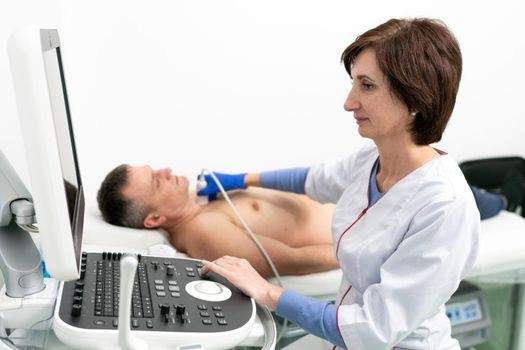Transthoracic Echocardiography
Transthoracic Echocardiography (TTE) services provide a non-invasive and highly informative window into the intricacies of the heart. This advanced imaging technique utilizes ultrasound technology to create real-time images of the heart's structure and function, empowering healthcare professionals with invaluable insights for accurate diagnosis and patient management.
At the heart of TTE services is the ultrasound transducer, a handheld device that emits high-frequency sound waves into the chest. These waves bounce off the heart's structures and are captured by the transducer, generating detailed images that allow healthcare providers to assess the heart's chambers, valves, and blood flow dynamics.
One of the primary advantages of TTE services is their ability to offer a comprehensive evaluation of cardiac anatomy and function in a safe and efficient manner. The procedure is non-invasive, eliminating the need for radiation exposure or invasive interventions. This makes TTE a preferred choice for diagnosing a wide range of cardiovascular conditions, from valvular abnormalities to structural defects and cardiomyopathies.

TTE services are particularly adept at assessing cardiac function in real-time, providing crucial information about the heart's pumping capacity, ejection fraction, and overall performance. This dynamic imaging capability enables healthcare professionals to identify abnormalities early in their development, facilitating prompt intervention and personalized treatment plans.
Furthermore, TTE services have evolved to incorporate advanced technologies such as 3D and Doppler imaging, enhancing the diagnostic accuracy and depth of information obtained. Three-dimensional imaging provides a more detailed representation of cardiac structures, while Doppler imaging allows for the assessment of blood flow velocity and direction, aiding in the detection of conditions like valvular stenosis or regurgitation.
In the era of telemedicine, TTE services have also embraced digital platforms, enabling remote interpretation and consultation. This ensures that patients, regardless of their location, can benefit from the expertise of cardiac specialists and receive timely, accurate assessments.
In conclusion, TTE services stand as a powerful tool in the cardiovascular diagnostic arsenal, offering a non-invasive, detailed, and dynamic assessment of the heart's structure and function. As technology continues to advance, the integration of TTE into routine cardiac care promises to further enhance our ability to detect and manage cardiovascular conditions, ultimately contributing to improved patient outcomes and quality of life.




